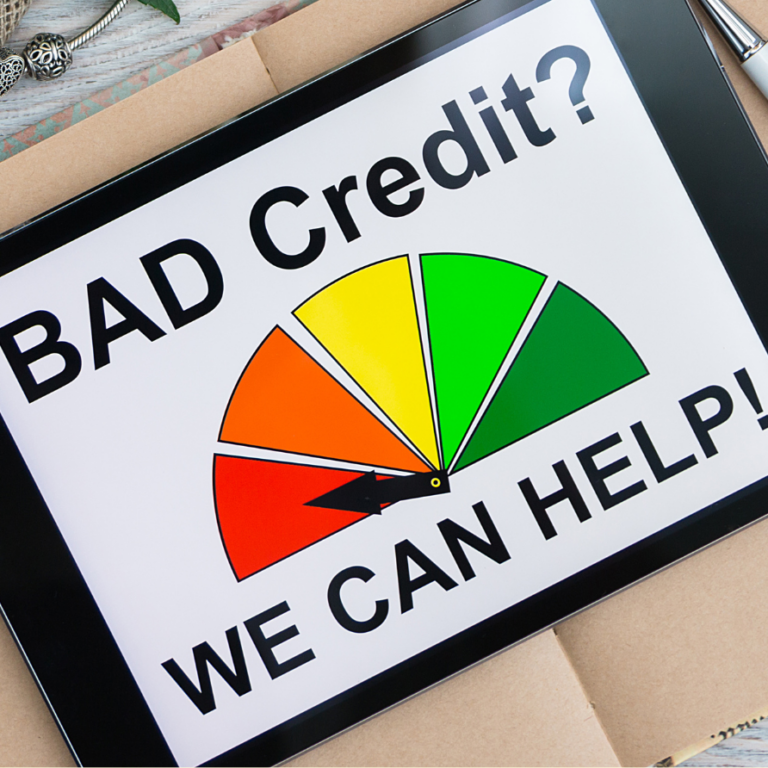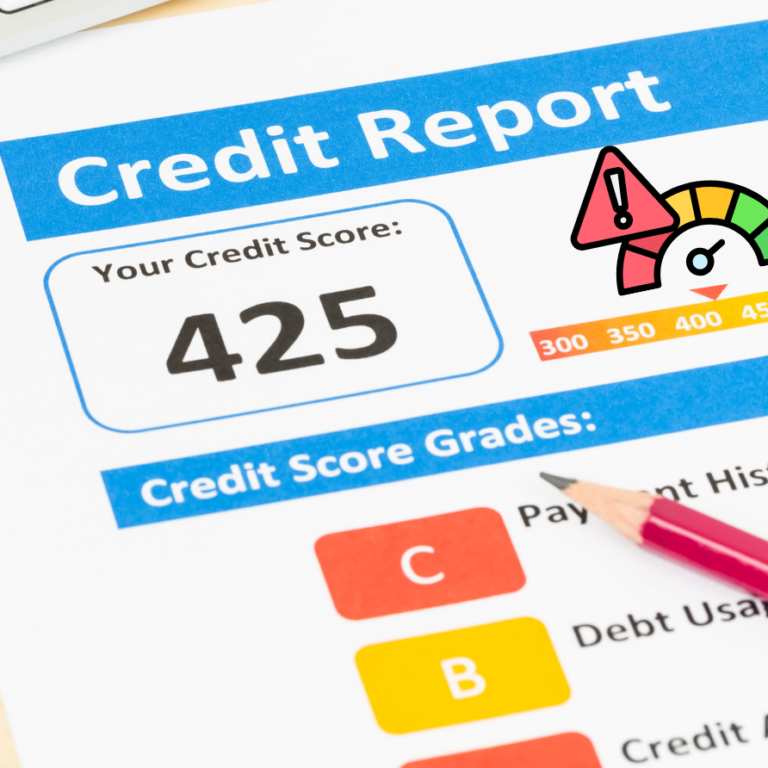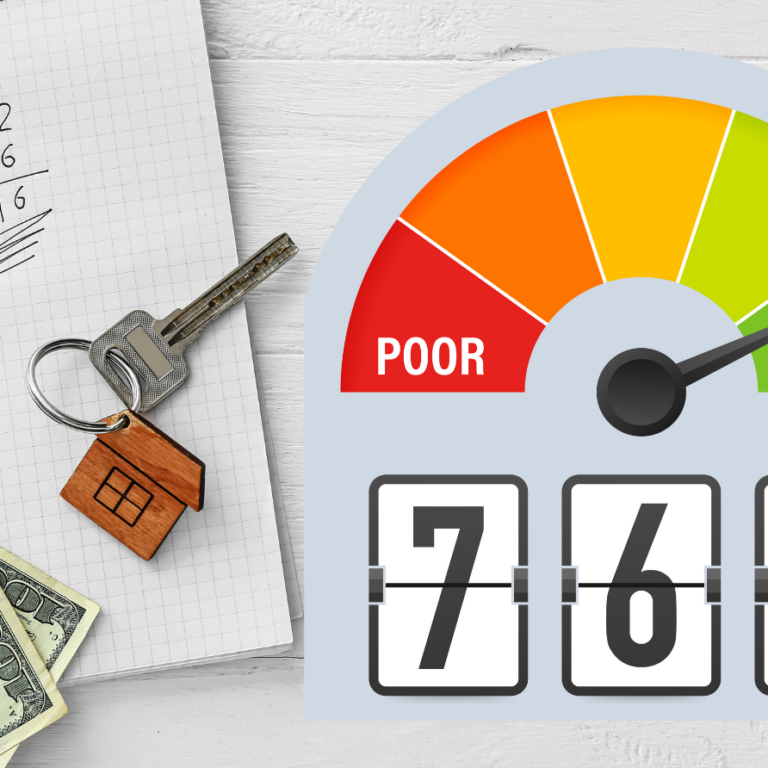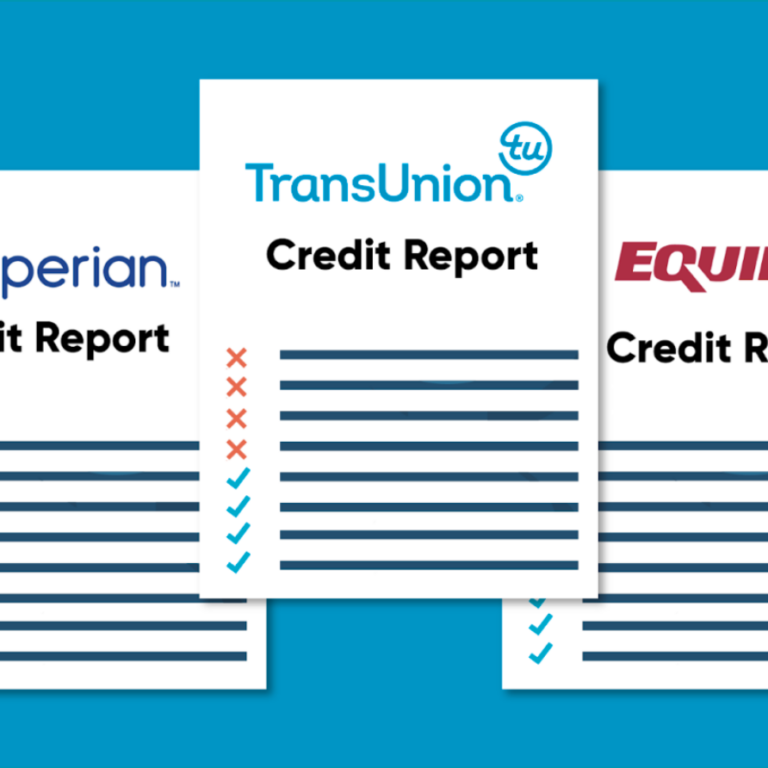What Is a Bad Tenants List or Do Not Rent List?
As a landlord, avoiding problem tenants is crucial, but relying on unregulated “Bad Tenants Lists” or “Do Not Rent Lists” can backfire. These informal blacklists, which compile names of tenants with past issues (late rent, property damage, etc.), often lack verification, violate privacy laws, and risk unfair discrimination. Instead, a legal, transparent tenant reporting system (like Landlord Credit Bureau) provides a fairer way to screen applicants by tracking both positive and negative rental history. Below, we break down everything landlords should know, along with smarter alternatives.
A better solution? A shared record system that tracks both positive and negative tenant behavior, promoting fairness and transparency in the rental industry.
In this guide, we’ll explore:
✔ What a Bad Tenants List is (and why it’s problematic)
✔ What defines bad tenants behavior
✔ Why tenant blacklists are unreliable (and sometimes illegal)
✔ How a shared tenant record system benefits landlords AND tenants
✔ How Landlord Credit Bureau (LCB) helps landlords report rental history legally
What Is a Bad Tenants List or Do Not Rent List?
A Bad Tenants List or Do Not Rent List is an informal and often unregulated collection of tenant names considered “problematic” by landlords or property managers. These tenants might have:
- Missed rent payments
- Damaged property
- Broken lease terms
- Caused disturbances or legal issues
The intention is to warn other landlords about tenants who may pose risks. However, these lists lack standardization, transparency, and legal safeguards, which raises serious concerns about accuracy, discrimination, and privacy.
The Problem with Bad Tenants Lists
While the idea of avoiding high-risk tenants is appealing, these lists have major flaws:
🚫 No verification process – Anyone can add a tenant without proof.
🚫 Potential discrimination – Some landlords may misuse lists to reject tenants unfairly.
🚫 Legal risks – In many places, tenant blacklists violate privacy laws.
🚫 No due process – Tenants often can’t dispute false claims.
Instead of relying on questionable blacklists, landlords should use legal, regulated reporting systems like axcessrent, Landlord Credit Bureau (LCB) to track rental history.
What Defines a “Bad Tenants”?
Not all late rent payments mean a tenant is “bad”—but certain patterns of behavior signal high risk. Landlords should watch for these red flags, documented fairly and legally:
Financial Red Flags
Problematic tenants often show consistent financial irresponsibility. These money-related issues can severely impact your rental business and should be carefully documented:
- Chronic late rent payments (30+ days late, multiple times)
- Consistently unpaid rent (leading to eviction)
- Unpaid utility bills (if included in lease)
- Broken payment agreements or NSF checks
- Pattern of partial payments without approval
Property-Related Issues
Tenants who disregard property care can cost thousands in repairs. Watch for these physical damage and misuse problems:
- Excessive property damage (beyond normal wear & tear)
- Unauthorized alterations (modifications without approval)
- Illegal subletting or Airbnb use (violating lease terms)
- Hoarding or creating health/safety hazards
- Neglecting basic maintenance responsibilities
Lease Violations
Serious breaches of rental agreements undermine landlord-tenant relationships. These contractual violations warrant attention:
- Unauthorized pets or occupants
- Noise complaints & neighbor disputes
- Criminal activity (drugs, violence, fraud)
- Refusing entry for repairs/inspections
- Parking violations or improper storage
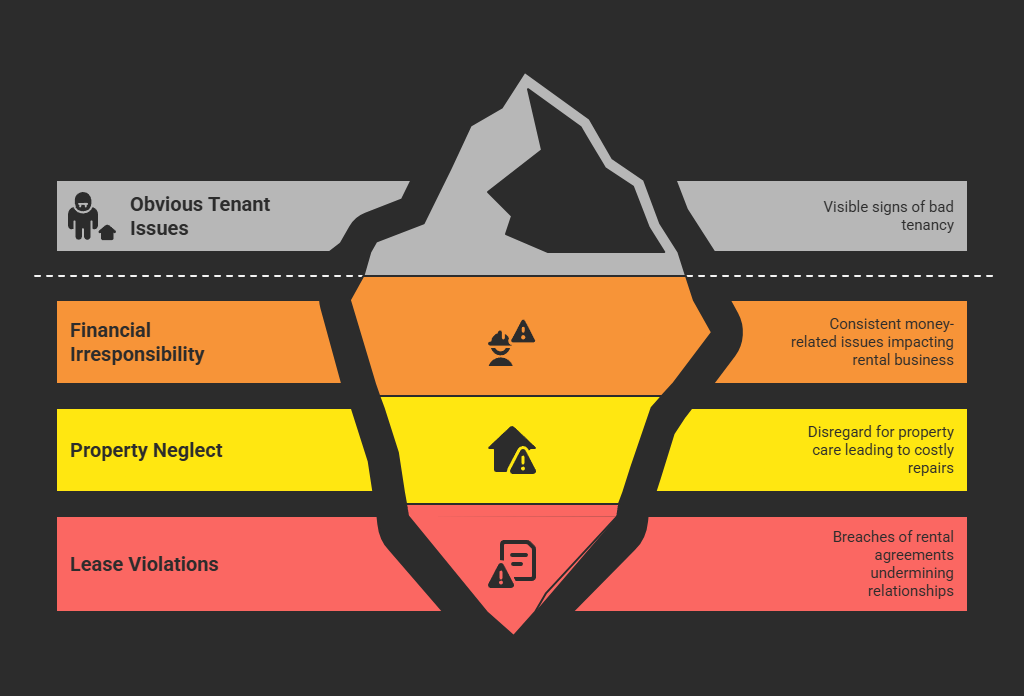
Important Note: Always consider context before labeling a tenant “bad.” Temporary financial hardship or single incidents may not indicate a pattern. Document all issues objectively and give tenants reasonable opportunities to correct problems before taking formal action.
How Landlords Can Report Tenant Behavior—Legally
To report tenant behavior without legal risk, landlords should use services like Landlord Credit Bureau (LCB) or AxcessRent’s reporting tools.
Here’s how:
- Register as a Property manager on a verified reporting platform like LCB.
- Submit verified records of rent payments, lease compliance, and communication history.
- Tenants are notified and can dispute inaccuracies, keeping the system balanced.
- Positive history boosts a tenant’s credit score and rental reputation.
- Negative history flags repeated issues, helping other landlords screen effectively.
Why This Approach Works Better
By reporting rental history through legitimate channels, landlords benefit from:
- Legal protection: No risk of discrimination claims
- Credit-based accountability: Tenants are motivated to stay in good standing
- Rewarding responsible renters: Helps tenants build credit and rental reputation
- Smarter decision-making: Data-backed records provide better screening insights
And for tenants, the rewards are even greater:
- Build credit with rent payments
- Stand out in competitive rental markets
- Gain trust and credibility with future landlords
Why a Shared Tenant Record System Works Better Than Traditional Blacklists
A traditional “Do Not Rent” list is a one-sided, often unfair system that only highlights negative tenant behavior without offering balance or transparency. In contrast, a shared tenant record system creates a fair, regulated, and mutually beneficial approach to tenant screening. By tracking both positive and negative rental history, this system promotes accountability while protecting the rights of both landlords and tenants.
Benefits for Landlords
A shared tenant record system helps landlords make smarter, lower-risk rental decisions by providing verified data. Key advantages include:
✔ Reduces Financial Risk – Avoid renting to tenants with a documented history of late payments, property damage, or lease violations.
✔ Saves Time on Screening – Instantly access a tenant’s full rental history instead of relying on unverified references.
✔ Encourages On-Time Payments – Tenants are more likely to pay rent on time if they know it affects their permanent rental record.
✔ Reduces Evictions & Turnover – Better screening means fewer problem tenants, leading to more stable rental income.
Benefits for Tenants
Unlike blacklists, which only punish tenants, a shared record system rewards responsible renters while giving others a chance to improve:
✔ Builds Credit History – On-time rent payments can be reported to credit bureaus (Equifax, TransUnion), helping tenants qualify for loans and future rentals.
✔ Creates a Fairer Process – No hidden blacklists; tenants can view and dispute their records if needed.
✔ Helps Renters with No Credit – Those without traditional credit (students, immigrants) can prove reliability through rental history.
✔ Opportunity for Improvement – A single late payment won’t permanently blacklist a tenant—consistent good behavior can outweigh past mistakes.
How It Works (Step-by-Step)
- Landlords Report Rent Payments – Positive (on-time payments) and negative (late/missed payments, lease violations) behavior is documented.
- Data Appears on Credit Reports – Services like Landlord Credit Bureau (LCB) integrate rental history with major credit agencies.
- Future Landlords Check Records – When a tenant applies for a new rental, landlords review their verified payment history.
- Accountability Cycle – Good tenants gain better rental options, while high-risk tenants face consequences—creating motivation for responsible renting.
Why This System is the Future of Renting
A shared tenant record system replaces outdated, unfair blacklists with a transparent, regulated, and balanced approach. Landlords gain protection against bad tenants, while responsible renters build credit and improve their housing opportunities.
Benefits of Reporting Both Positive and Negative Behavior
| For Landlords | For Tenants |
|---|---|
| 🔹 Better tenant screening | 🔹 Boosts credit score |
| 🔹 Reduced eviction and turnover risk | 🔹 Increases chances of approval |
| 🔹 Legal and compliant documentation | 🔹 Rewards responsible behavior |
| 🔹 Encourages on-time rent payments | 🔹 Transparent, accessible records |
How to Report Tenant Records with AxcessRent
At AxcessRent, we empower landlords to build trust and protect their properties by reporting rental payment data safely and ethically. Our system:
- Helps tenants build credit with rent payments
- Allows landlords to screen more confidently
- Keeps records centralized and transparent
- Eliminates the need for risky “Do Not Rent” lists
Whether you’re a seasoned landlord or just starting out, our platform gives you the tools to manage tenant records the right way.
Final Thoughts: Ditch the Blacklist—Choose Accountability
The Bad Tenants List and Do Not Rent List are outdated, risky, and legally questionable methods. They foster mistrust and discrimination, rather than promoting solutions. Instead, a transparent, balanced, and fair system is the future of responsible property management.
By using tools like AxcessRent, landlords can:
- Build trust
- Make better leasing decisions
- Protect their income
- Encourage tenant responsibility
And tenants? They get the chance to prove themselves, build credit, and secure better housing options.
✅ Ready to start reporting responsibly?
Sign up at AxcessRent.com and join the movement toward a smarter, safer rental industry.

